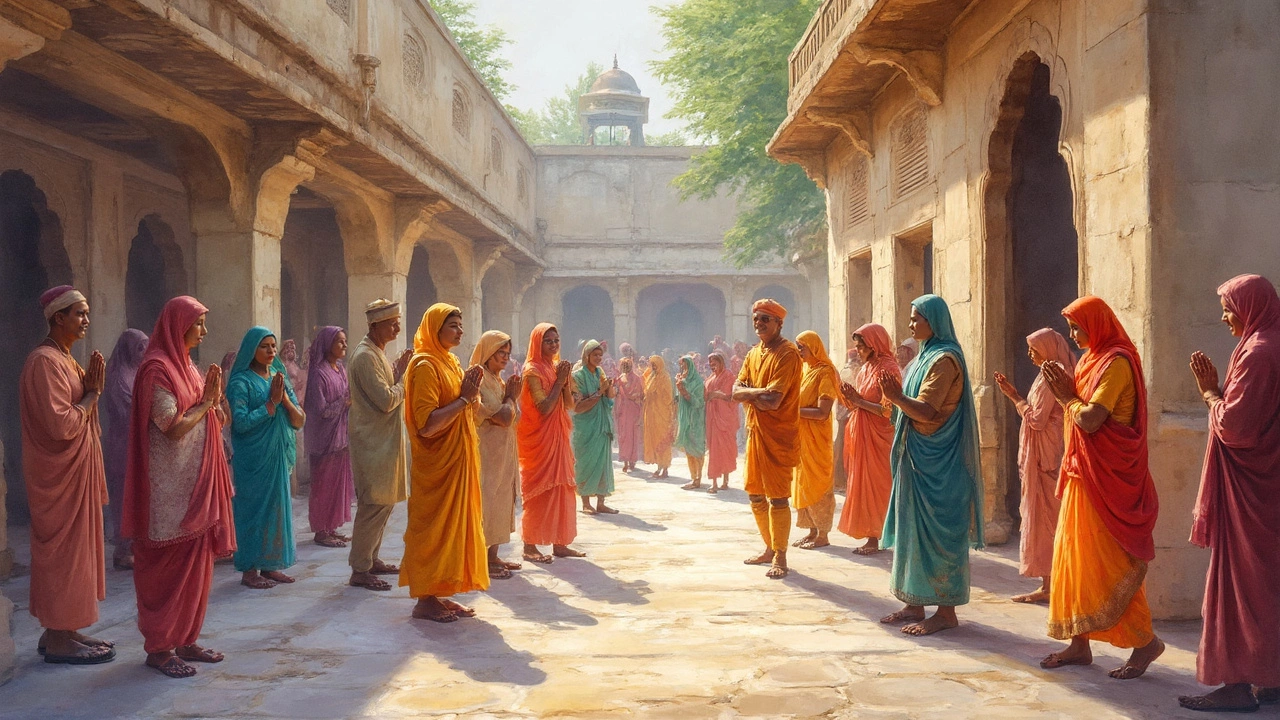Social Customs in India – Everyday Etiquette, Dress & Festive Traditions
India is a mix of languages, foods, and ways of doing things. If you want to fit in, it helps to know a few simple customs that most people follow. Below are the basics you’ll hear about day‑to‑day, from how you say hello to what you wear at a family gathering.
Greetings and Body Language
The first thing you notice is the way people greet each other. In most regions, a Namaste – hands together, slight bow – is the go‑to salute. It works for strangers, coworkers, and elders alike. If you’re in a big city or dealing with younger folks, a casual “hi” or “hello” is fine, but adding a quick Namaste shows respect.
Eye contact matters too. In the north, steady eye contact signals confidence, while in the south a softer gaze is polite. A firm handshake is okay in business settings, but remember to keep it light – a hard grip can feel aggressive.
When you meet someone for the first time, it’s common to ask about their family. A simple “How is your family?” shows you care about the person beyond the work talk. This question often opens up a friendly chat and builds trust fast.
Dress, Food, and Festive Practices
What you wear tells a story. Traditional Indian clothing varies by state: men might wear a kurta‑pajama or a simple cotton shirt, while women often choose a salwar‑kameez, sari, or regional dress like a lehenga. For casual outings, clean jeans and a t‑shirt are fine in most urban spots, but covering shoulders and knees is a safe bet for temples and rural visits.
Food customs are another big part of social life. You’ll often be offered a drink or a small bite when you enter a home. Accepting shows gratitude; refusing can be seen as rude unless you have a genuine reason. When eating with your hands, start with your right hand – the left is considered unclean in many traditions.
Festivals are the highlight of Indian social calendars. Whether it’s Diwali’s lights, Holi’s colors, or the Pushkar Camel Fair’s quirky events, each celebration has its own dress code and etiquette. For Diwali, wear something bright, avoid black, and bring a small sweet as a gift if you’re visiting. During Hola, expect lots of color splatter – wearing old clothes is a smart move.
Finally, respect for elders rolls through every custom. When an older person enters a room, stand up or lower your seat if you’re seated. Offering your seat on a bus or train is a simple gesture that earns instant goodwill.
These everyday customs aren’t hard rules; they’re habits that make social interactions smoother. By remembering a few key greetings, dressing appropriately for the occasion, and showing basic respect for food and elders, you’ll blend in comfortably and enjoy the rich tapestry of Indian society.
